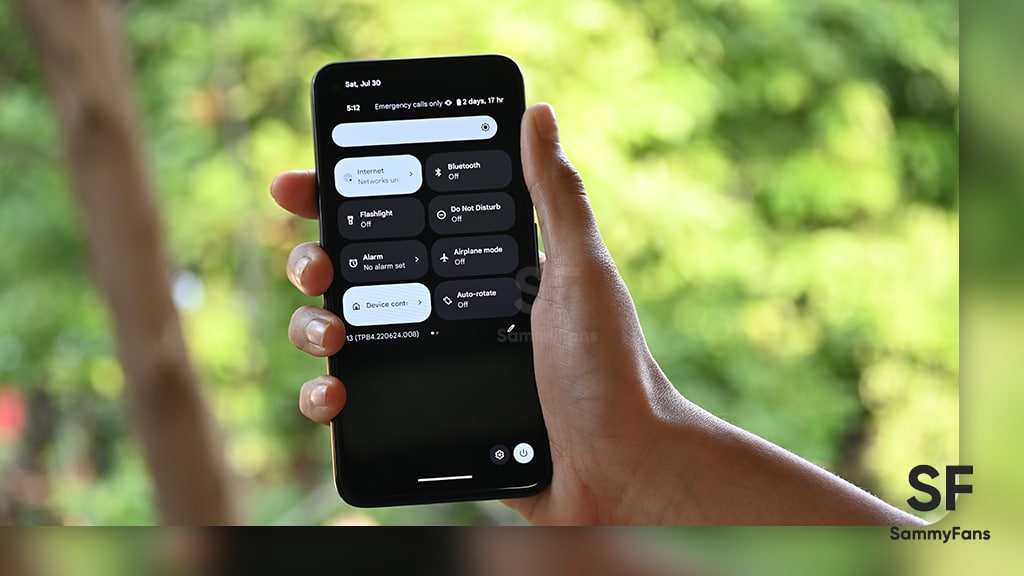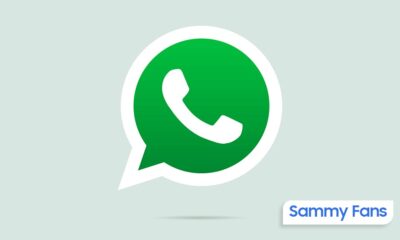Android
4 unique features that Android has but iOS doesn’t

Both Android and iOS are competent mobile operating systems, while Android does have a few functions that the iPhone still lacks. It turns out that some functionalities are still only accessible on Android phones despite all the improvements. We’ve listed 4 unique Android features that Apple’s iOS misses.
Clone App
You can replicate apps and utilize numerous accounts on Android phones. Making a copy of the original WhatsApp program and using a second account on it will allow you to utilize two WhatsApp accounts on your phone.
Download Sammy Fans App
The software of some Android phone makers, including Xiaomi and OnePlus, has this feature. If your Android phone does not already have this service installed, you can download a third-party clone app from the Google Play Store.
Modify default system apps
You can’t really customize many default apps on an iPhone. iPhones now have the option to change their default apps, except for the Email and Browser apps, according to the iOS 14 upgrade.
A phone running Android offers much more. Any third-party software with a better user interface and feature set can replace all of the standard apps, including the phone, messaging, digital assistant, and home apps.
Join SammyFans on Telegram
Always on display
Many Android smartphones have an always-on display option that enables you to monitor particular details like the weather or battery life without waking up the full screen.
It can be customized to show app notifications, the current date and time, the music you’re listening to, weather alerts, and other information. For smartphones with an AMOLED screen, the feature is useful and battery-saving. iPhone lacks this feature so occasionally your screen may wake up to notifications, which can be annoying.
Follow Sammy Fans on Google News
Install Custom ROMs
Custom ROMs are enhanced editions of the Android OS that come with a tonne of customization options and better functionality. The primary benefit of custom ROMs is that they provide your Android phone access to the most recent software, which increases the lifespan of the device.

You can have full control over your Android phone if you have root access. Once your smartphone has been rooted, you may add various mods for personalization, overclock or underclock the processor to boost efficiency or battery life, use a portion of your internal storage as additional RAM, and even boost the screen above 60 Hz. iPhone doesn’t offer to root, and it’s more difficult and doesn’t give you as much access to your device.
Android
Google unveils Android 16 Developer Preview with exciting features

Google has kicked off the Developer Preview for Android 16, arriving earlier than expected. Usually, these previews begin in February, but Android 16 DP1 is launching three months ahead of schedule this year.
The earlier release of the DP1 is because Google has moved the official Android 16 release from the third quarter to the second quarter of 2025. It aims to ensure that more devices get access to the major Android updates sooner.
Android 16 DP1 is available for several Pixel devices, including the pixel 6, Pixel 6 Pro, Pixel 6a, Pixel 7, Pixel 7 Pro, Pixel 7a, Pixel Tablet, Pixel Fold, Pixel 8, Pixel 8 Pro, Pixel 8a, Pixel 9, Pixel 9 Pro, Pixel 9 Pro XL, and Pixel Pro Fold, as well as the Android Emulator. It can be identified through version BP21.241018.009.
![]()
The Android 16 Developer Preview brings new features for app developers. It brings a system photo picker that will help apps give users a smoother, more integrated way to select photos without needing extra permissions.
Another new feature is Health Connect, which lets apps access and manage medical records in FHIR format, but only with user permission. The update also includes the latest version of the Privacy Sandbox for privacy protection.
This preview program runs from November 2024 until the final public release next year. Android 16 Beta Program will begin in January, with the final stable release expected in Q2 of 2025. Stay tuned for more updates.
Android 16 to make Quick Settings access easier with one-finger swipe
Android
Google’s Android 15 QPR2 Beta 1 update is now available

Google has released the first beta of Android 15 QPR2 for Pixel users. The update can be identified via build version BP11.241025.006. However, users are also waiting for the stable release of Android 15 QPR1 in December this year.
Android 15 QPR2 Beta 1 update comes with the November 2024 security patch. It is available for a wide range of Pixel devices, including Pixel 6, Pixel 6 Pro, Pixel 6a, Pixel 7, Pixel 7 Pro, Pixel 7a, Pixel Tablet, Pixel Fold, Pixel 8, Pixel 8 Pro, Pixel 8a, Pixel 9, Pixel 9 Pro, Pixel 9 Pro XL, and Pixel 9 Pro Fold, as well as the Android Emulator.
Quarterly Platform Releases are updates that bring more noticeable changes and new features compared to the usual monthly bug fixes. These updates are perfect for testing out bigger UI changes or new features that don’t need to wait for a full Android version release.
![]()
The QPR2 Beta 1 is the second major update for Android 15, with the final version expected to launch in March 2025 (via 9to5Google). This update brings the usual bug fixes, security enhancements, and new features to test.
Users participating in the beta program are advised to report any issues via the Android Beta Feedback app, easily accessible through the app drawer or Quick Settings. Install the update now to get an enhanced experience.
Android 16 to make Quick Settings access easier with one-finger swipe
Android
Android 16 to make Quick Settings access easier with one-finger swipe

Google is reportedly going to bring an interesting change with Android 16, which will no longer require two fingers to pull down the Quick Settings panel. Previously, there were concerns that users would need to swipe down with two fingers to bring up the Quick Settings. Fortunately, Google has decided to simplify this process.
With Android 16, accessing the Quick Settings will only require a single-finger swipe down on the right half of the status bar. The one-finger swipe access aligns it more closely similar to other Android manufacturers, like OnePlus and Samsung, have designed their systems.
Several users didn’t like the idea of needing two fingers to swipe down, as it felt more awkward and less convenient. By switching to a single-finger swipe for Android 16, Google will make it easier for users to manage their settings with less effort. A well-known tipster Mishaal Rahman (via Android Authority) spotted the code for this Quick Settings change.

However, the new design still lacks the ability to swipe seamlessly between the notifications and Quick Settings panels. Hopefully, Google will add this feature before the official release.
In addition to the swipe change, Android 16 will introduce resizable Quick Settings tiles and better categorization to help users find specific settings more easily.
However, these features are still being worked on and may not be fully ready in the current beta. They are expected to roll out in the final Android 16 release, which is expected in mid-2025.












